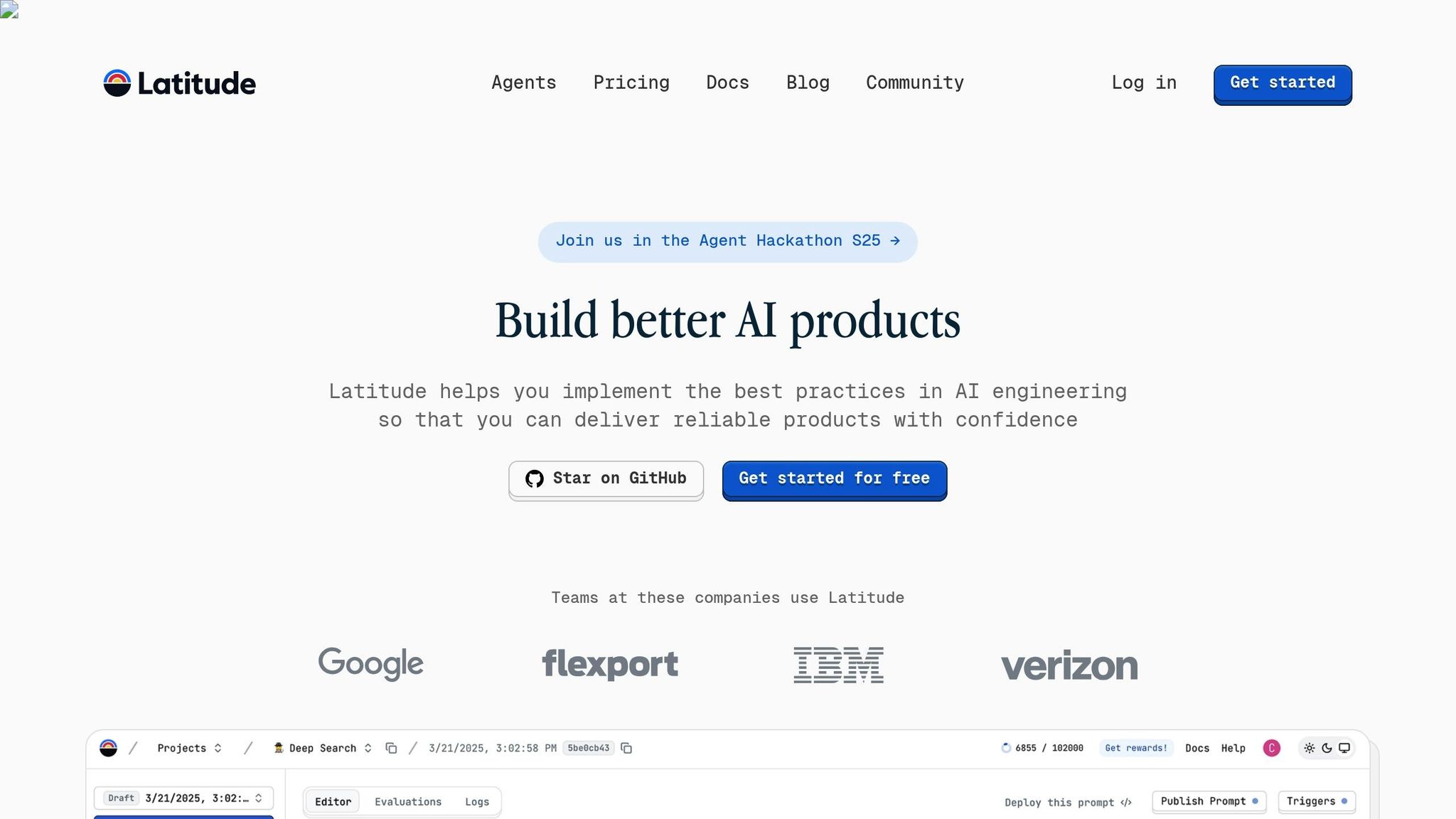Domain-Specific Criteria for LLM Evaluation
Explore the critical need for domain-specific evaluation of large language models in scientific fields to ensure accuracy and reliability.

Evaluating large language models (LLMs) for scientific fields requires precision. Traditional metrics like BLEU and ROUGE fall short when it comes to complex domains like medicine or engineering. Here's why specialized evaluation is critical:
- Factual Accuracy: Inaccurate outputs can lead to dangerous consequences, especially in medicine or research.
- Handling Complex Data: Scientific tasks often involve numerical data, graphs, or protocols that LLMs must process correctly.
- Domain-Specific Metrics: General benchmarks fail to measure the nuanced needs of specialized fields.
Key Takeaways:
- Challenges: LLMs struggle with scientific vocabulary, mixed data formats, and maintaining output consistency.
- Solutions: Metrics like CURIE and tools like SciKnowEval focus on scientific accuracy, reasoning, and domain alignment.
- Expert Involvement: Combining automated tools with expert reviews ensures reliability.
This article explains how to evaluate LLMs effectively in scientific applications, highlighting tailored methods, challenges, and solutions.
Main Problems in Scientific LLM Evaluation
Evaluating scientific large language models (LLMs) presents unique challenges that go beyond traditional testing methods. These challenges underline the importance of domain-specific evaluation to ensure accuracy and reliability.
Scientific Terms and Expert Knowledge
One major hurdle is the specialized vocabulary and deep contextual understanding required in scientific fields. LLMs often struggle with these complexities, particularly in precision-critical areas. For example, Med-PaLM 2's performance on the MedQA dataset, which tests US Medical Licensing Examination questions, revealed gaps in handling such domain-specific content.
Processing Multiple Data Types
Scientific research often involves diverse data formats, and LLMs must be capable of interpreting and integrating these seamlessly. This has led to the development of specialized scientific agents designed to tackle such challenges.
| Data Type | Evaluation Challenge | Impact on Testing |
|---|---|---|
| Numerical Data | Ensuring calculation accuracy | Validation against known solutions needed |
| Visual Elements | Interpreting graphs and charts | Requires multimodal assessment tools |
| Technical Protocols | Following procedural steps | Demands step-by-step verification |
| Mixed Format Data | Integrating multiple formats | Comprehensive testing frameworks required |
The ability to handle mixed data formats poses significant challenges for validation, complicating efforts to ensure the reliability of outputs in scientific applications.
Output Quality Verification
Validating the quality of outputs in specialized scientific contexts demands rigorous evaluation methods. The SciKnowEval benchmark is one such tool, assessing LLMs across five levels of scientific knowledge with a dataset of 70,000 problems spanning disciplines like biology, chemistry, physics, and materials science.
"LLMs are probabilistic models...if LLMs generate a bad molecule, we do not have to modify it atom by atom or substructure by substructure; we can simply discard them and keep the good ones, as long as we can keep pushing the distribution towards better molecules." - Yuanqi Du, Author
ChemBench exemplifies this approach with its dataset of 2,788 question–answer pairs, designed to evaluate chemical knowledge and reasoning at an expert level. However, the limited context windows and variability in LLM responses make robust validation mechanisms essential.
Essential Elements of Scientific LLM Testing
Evaluating scientific LLMs requires a blend of specialized metrics, diverse data testing, and thorough expert review to ensure precision and reliability.
Domain-Specific Metrics
Metrics tailored to specific scientific fields and applications are crucial for evaluating LLMs effectively. For instance, in April 2025, Google Research introduced the CURIE benchmark, which focuses on six key disciplines: materials science, condensed matter physics, quantum computing, geospatial analysis, biodiversity, and proteins.
| Evaluation Component | Purpose | Implementation |
|---|---|---|
| Accuracy Metrics | Measure factual correctness | ROUGE-L, intersection-over-union |
| Technical Validation | Verify scientific reasoning | LMScore, LLMSim |
| Domain Alignment | Ensure field-specific relevance | Expert-defined criteria |
| Output Consistency | Check for reliable results | Identity ratio measurements |
These metrics provide a structured framework for tackling the unique challenges posed by evaluating scientific outputs across different data types and formats.
Mixed Data Type Testing
Scientific research often involves varied data formats, making it essential to test LLMs across a broad spectrum of data types. A layered evaluation process ensures comprehensive coverage. For example, when testing LLMs in financial analysis, engineers often combine automated tools to verify numerical accuracy with human oversight to interpret more nuanced or complex information.
"Dataset quality directly impacts the model performance."
- Gideon Mann, Head of Bloomberg's ML Product and Research team
In addition to numerical and multimodal data assessments, expert evaluation plays a critical role in confirming the scientific validity of outputs.
Expert Review Process
Expert review is indispensable for ensuring the accuracy and reliability of scientific LLMs. However, studies have highlighted several challenges in LLM performance:
- GPT-4 exhibited a hallucination rate of 28.6%.
- Subject matter experts (SMEs) agreed with LLM judgments 68% of the time.
- Expert reviewers achieved inter-rater agreement rates between 72% and 75%.
The expert review process focuses on several key areas:
- Verifying factual correctness and logical reasoning
- Assessing scientific methods and procedures
- Ensuring adherence to established scientific principles
To address these challenges, organizations should adopt structured review protocols that combine automated tools for initial screening with expert validation. This dual approach not only identifies subtle inaccuracies that automated systems might overlook but also leverages the scalability of automated processes to enhance efficiency.
Building Scientific Evaluation Systems
Developing effective evaluation frameworks for scientific LLMs requires a methodical and adaptive approach. Success hinges on structured testing cycles and collaboration between technical experts and domain specialists. These systems address domain-specific challenges and ensure the level of precision required for scientific applications. Through iterative cycles and tools like Latitude, teams can streamline their efforts and maintain high standards.
Testing and Improvement Cycles
Evaluation isn’t a one-and-done task - it’s an ongoing process that evolves over time. As Jane Huang aptly puts it:
"Evaluation is not a one-time endeavor but a multi-step, iterative process".
A robust testing cycle typically includes the following phases:
| Phase | Key Activities | Success Metrics |
|---|---|---|
| Initial Assessment | Baseline testing against domain benchmarks | Performance measured against benchmarks |
| Continuous Monitoring | Automated evaluation in production | Alerts for metric degradation |
| Version Control | Managing datasets and test cases | Reproducibility rates |
| Performance Analysis | Comparing results with established thresholds | Regression prevention rates |
Integrating these cycles into MLOps pipelines can significantly improve efficiency. For instance, teams can use GitHub Actions to automate evaluation suites on pull requests and block merges if performance drops below acceptable levels. This kind of systematic approach ensures smooth collaboration and reliable outcomes.
Using Latitude for Team Coordination

Latitude is a tool that facilitates seamless collaboration between domain experts and engineers. It simplifies communication and documentation, making it easier to align efforts.
Collaboration typically unfolds in three phases:
- Preparation: Define clear specifications and evaluation criteria.
- Implementation: Use Latitude’s prompt engineering tools to design and test evaluation scenarios.
- Refinement: Continuously adjust criteria based on feedback and real-world data.
This structured workflow ensures that teams remain aligned and adaptable as challenges arise.
Updating Evaluation Standards
Keeping evaluation standards up-to-date is critical for maintaining the relevance and reliability of scientific LLMs. Continuous pipelines with defined checkpoints are essential throughout the model lifecycle.
Best practices include:
- Maintaining version control for evaluation datasets.
- Setting up automated alerts for significant metric deviations.
- Regularly reassessing performance against established benchmarks.
- Incorporating new AI safety metrics as they become available.
For example, an astronomy team implemented a Slack chatbot powered by Retrieval-Augmented Generation (RAG) grounded in arXiv papers. This system allowed them to track interactions and dynamically evaluate LLM performance based on real-world usage.
Conclusion: Next Steps in Scientific LLM Testing
Main Points Review
Evaluating scientific LLMs demands both technical precision and specialized knowledge. Julia MacDonald, VP of LLMs Ops at SuperAnnotate, highlights this perfectly:
"Building an evaluation framework that's thorough and generalizable, yet straightforward and free of contradictions, is key to any evaluation project's success."
To summarize, here’s a quick overview of the critical components for effective evaluation:
| Component | Strategy | Indicators |
|---|---|---|
| Data Quality | Expert-curated datasets | Domain accuracy |
| Testing Cycles | CI/CE/CD pipeline | Performance metrics |
| Expert Oversight | Specialist review | Field compliance |
| Safety Protocols | Ethical monitoring | Industry compliance |
These elements provide a solid foundation for refining evaluation approaches.
Looking Ahead
Filling the current gaps in evaluation methods is the next challenge. With tools like Latitude enhancing collaboration between experts and engineers, teams are better positioned to design advanced frameworks tailored to scientific needs.
Key areas to focus on include:
- Multimodal Evaluation: Expanding testing across a variety of data types and scientific fields.
- Adaptive Benchmarking: Creating flexible benchmarks that evolve alongside scientific progress.
- Environmental Considerations: Developing sustainable testing processes that balance computational demands with efficiency.
The future lies in striking the right balance between automation and expert input. By prioritizing customized benchmarks and maintaining transparency and reproducibility, teams can ensure their evaluation systems stay relevant and reliable. With the support of platforms like Latitude, organizations can confidently meet the shifting demands of scientific applications while maintaining consistent quality.
FAQs
Why don’t traditional metrics like BLEU and ROUGE work well for evaluating LLMs in scientific fields?
Why Traditional Metrics Fall Short for Evaluating LLMs in Science
Metrics like BLEU and ROUGE are commonly used to evaluate language models, but they don’t quite cut it when it comes to assessing large language models (LLMs) in scientific domains. Why? Because these metrics focus heavily on word or phrase overlap, which doesn’t tell the whole story in fields that demand depth and precision.
For example, they often miss critical elements like factual accuracy, logical coherence, and the ability to generate new insights - all of which are essential when evaluating scientific content. Science isn’t just about repeating what’s been said; it’s about understanding and contributing meaningfully to complex ideas.
Another challenge is the unpredictable nature of LLM outputs. These models don’t always produce the same responses, making surface-level metrics less reliable for judging quality. To truly evaluate LLMs in scientific contexts, we need more sophisticated, domain-specific criteria that go beyond simple text overlap.
How do tools like SciKnowEval and CURIE improve the evaluation of LLMs in specialized scientific domains?
Tools like SciKnowEval and CURIE are essential for assessing how well large language models (LLMs) perform in specialized scientific fields, thanks to their carefully designed benchmarks.
SciKnowEval employs a multi-level framework to evaluate an LLM's ability to tackle intricate scientific tasks. It helps ensure these models can handle the advanced reasoning and problem-solving needed in complex research settings.
On the other hand, CURIE focuses on testing models for multitask scientific reasoning and their capacity to process and understand long contexts. This makes it particularly useful for evaluating whether models can produce accurate and relevant results across a variety of scientific scenarios.
Both tools play a critical role in identifying where LLMs excel and where they fall short, offering valuable insights to refine and improve their application in scientific research.
How do expert reviews ensure the accuracy and reliability of scientific outputs from LLMs, and how are they used in the evaluation process?
Expert reviews are essential for ensuring the accuracy and dependability of large language model (LLM) outputs, particularly in scientific fields. These reviews help uncover issues like biases, errors, or misinterpretations that can sometimes appear in the model's responses.
During the evaluation process, experts compare LLM-generated content with established standards in the field. Their role includes tasks such as initial content assessment, pairing reviewers with the right expertise, and offering feedback to fine-tune the outputs. This process ensures the content aligns with strict scientific criteria while maintaining its trustworthiness.
LLMs work best as tools to assist human reviewers, not as substitutes. This approach safeguards the depth and precision required in scientific evaluations.
